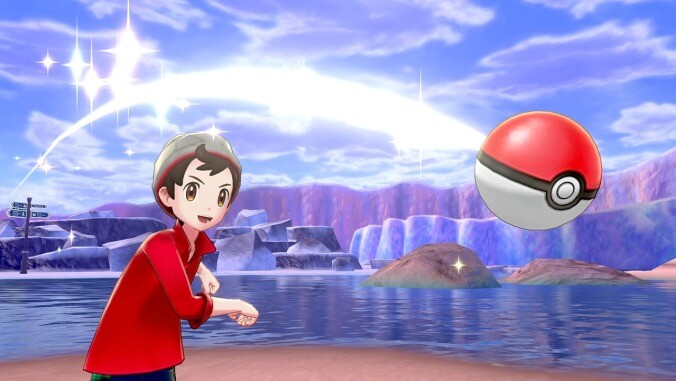Pokémon’s journey to the DLC Region was a long time coming

Every Friday, A.V. Club staffers kick off our weekly open thread for the discussion of gaming plans and recent gaming glories, but of course, the real action is down in the comments, where we invite you to answer our eternal question: What Are You Playing This Weekend?
Has any franchise in the history of gaming been more primed for the advent of paid downloadable content than Pokémon? Not to downplay the incredible, genre-defining work that Game Freak’s monster designers have done over the last several decades, investing its sprawling menagerie of creatures with energy and life. But at the same time, let’s be honest: All the company ever really needed to do to secure itself a license to print money was slap lightning bolts on a few new breeds of dogs, call it the “Shockapup Additional Content Pack,” and let the Pokédollars roll in.
The fact that Pokémon hasn’t done this—that this week’s announcement of the Pokémon Sword and Shield Expansion Passes is the first time the series has ever asked players to shell out for downloadable additional content for their brightly colored worlds—is kind of amazing. In the past, when the franchise has added paid content to its games, it was in the form of updated re-releases, and only then after multiple years (and sometimes even whole console generations) had passed. The idea of paying for new Pokémon is a shockingly new one for a series that’s been around for longer than so many of the people playing it.
Part of this, presumably, is cultural: The Pokémon series kicked off Stateside back in 1998, well before the idea of paid DLC had taken hold anywhere in the gaming sphere, or in the hearts of prospective horse armor vendors. There were also hardware limitations, since the series didn’t move to a system with really reliable WiFi capability until Pokémon X and Y on the 3DS in 2013. (Okay, yes, technically, the earlier DS handheld also had internet capability, but not the kind you necessarily wanted powering a franchise re-defining money grab.) But even as the times moved on, the Pokémon business model remained the same— even if the arrival of the updated versions of Sun and Moon, complete with a host of new monsters, a mere year after their initial release, does now seem like a harbinger of things to come.
No, it all comes back to one idea: Not just the vaunted “You gotta catch ’em all,” but the idea that the Pokémon games have an obligation to their players to give everyone an equal chance to do so. While more recent entries in the series have embraced Pokémon’s potential for expressive play—allowing players to define their own win conditions, whether that comes from conquering beauty contests, cultivating berry gardens, or crushing their opponents in mystical bloodsports—the “Get all original 150/200/whatever” premise has always been at Pokémon’s heart. And even the franchise’s most mercenary impediment of that goal, the decision to split exclusive monsters between two different editions with each generation of games, came from an explicitly social-focused place. Once upon a time, a kid with Pokémon Blue looking to pick up a Primeape would have to literally attach their Game Boy to another kid’s system, engaging in communication, negotiation, and even an occasional dose of pure altruism. The idea of Kid A having access to more monsters than Kid B just because they dropped $30 on a DLC expansion pass is as alien to the franchise as it was inevitable.
Because, really, this was always coming. And for what it’s worth, the actual content of the two DLC areas that Game Freak has shown off for Sword and Shield seem bountiful. They’re filled with cool new customization options, expansive territories to explore, and awesome new monsters to collect. (We’re very into Large Brain Dog, as if that needed to be said.) And we have no interest in trucking with the conspiracy theories that suggest that the Galar Region’s sizable roster of monsters was trimmed specifically so that Nintendo et al. would have beloved creatures to add in after the fact. In fact, it seems practically petty to ding the series for following in the footsteps of literally every other gaming franchise on the planet, by finally giving in to a trend that it’s resisted for so many years. And yet, there’s something elemental—and not just in a God-like murder bird sort of way—that rankles about the idea of Pay Per Pokémon gaming. It’s the rare series that has never lost sight of its role as a playground for kids, first and foremost, and installing any kind of bar for entry for some of its players feels a little like seeing a velvet rope get put up across the middle of a public park.